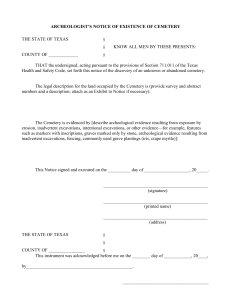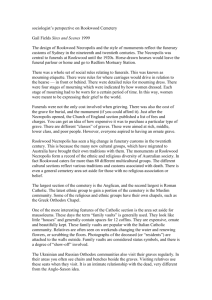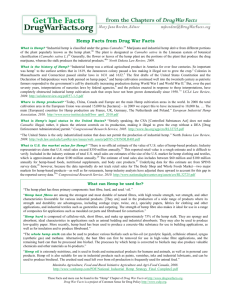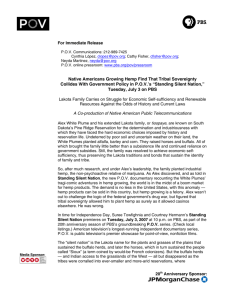Twice Told Tales – Cemeteries and Gravestones in the News
advertisement
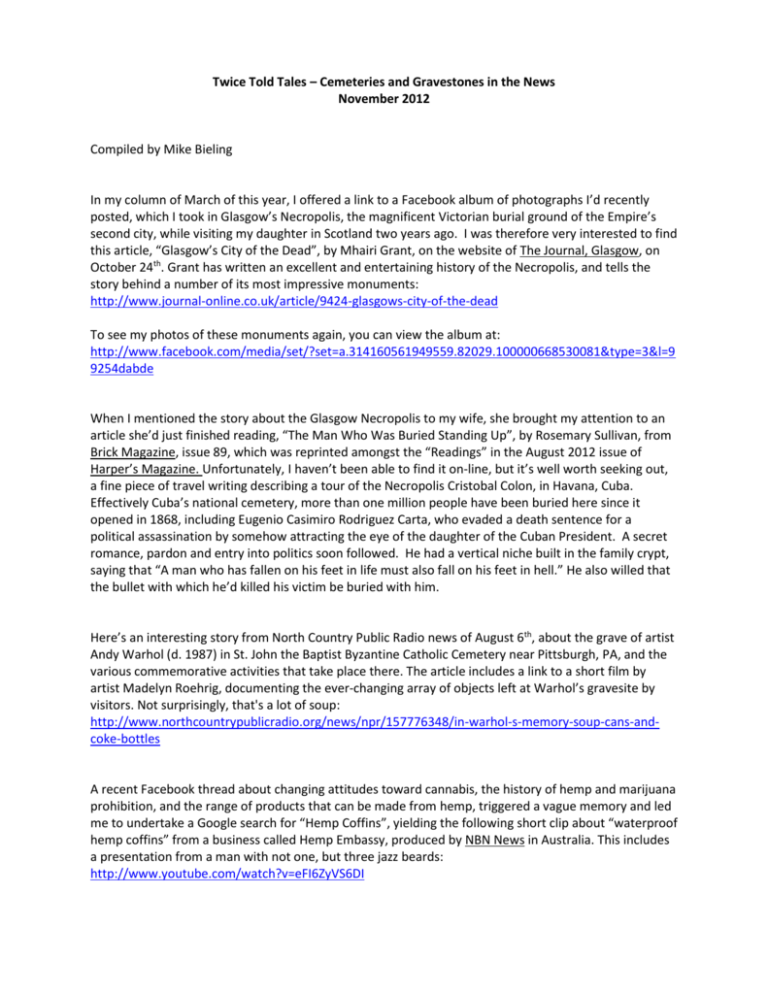
Twice Told Tales – Cemeteries and Gravestones in the News November 2012 Compiled by Mike Bieling In my column of March of this year, I offered a link to a Facebook album of photographs I’d recently posted, which I took in Glasgow’s Necropolis, the magnificent Victorian burial ground of the Empire’s second city, while visiting my daughter in Scotland two years ago. I was therefore very interested to find this article, “Glasgow’s City of the Dead”, by Mhairi Grant, on the website of The Journal, Glasgow, on October 24th. Grant has written an excellent and entertaining history of the Necropolis, and tells the story behind a number of its most impressive monuments: http://www.journal-online.co.uk/article/9424-glasgows-city-of-the-dead To see my photos of these monuments again, you can view the album at: http://www.facebook.com/media/set/?set=a.314160561949559.82029.100000668530081&type=3&l=9 9254dabde When I mentioned the story about the Glasgow Necropolis to my wife, she brought my attention to an article she’d just finished reading, “The Man Who Was Buried Standing Up”, by Rosemary Sullivan, from Brick Magazine, issue 89, which was reprinted amongst the “Readings” in the August 2012 issue of Harper’s Magazine. Unfortunately, I haven’t been able to find it on-line, but it’s well worth seeking out, a fine piece of travel writing describing a tour of the Necropolis Cristobal Colon, in Havana, Cuba. Effectively Cuba’s national cemetery, more than one million people have been buried here since it opened in 1868, including Eugenio Casimiro Rodriguez Carta, who evaded a death sentence for a political assassination by somehow attracting the eye of the daughter of the Cuban President. A secret romance, pardon and entry into politics soon followed. He had a vertical niche built in the family crypt, saying that “A man who has fallen on his feet in life must also fall on his feet in hell.” He also willed that the bullet with which he’d killed his victim be buried with him. Here’s an interesting story from North Country Public Radio news of August 6th, about the grave of artist Andy Warhol (d. 1987) in St. John the Baptist Byzantine Catholic Cemetery near Pittsburgh, PA, and the various commemorative activities that take place there. The article includes a link to a short film by artist Madelyn Roehrig, documenting the ever-changing array of objects left at Warhol’s gravesite by visitors. Not surprisingly, that's a lot of soup: http://www.northcountrypublicradio.org/news/npr/157776348/in-warhol-s-memory-soup-cans-andcoke-bottles A recent Facebook thread about changing attitudes toward cannabis, the history of hemp and marijuana prohibition, and the range of products that can be made from hemp, triggered a vague memory and led me to undertake a Google search for “Hemp Coffins”, yielding the following short clip about “waterproof hemp coffins” from a business called Hemp Embassy, produced by NBN News in Australia. This includes a presentation from a man with not one, but three jazz beards: http://www.youtube.com/watch?v=eFI6ZyVS6DI Many readers will be aware of the scandal that erupted recently in the UK after allegations emerged, a year after his death, that celebrated DJ and BBC TV personality Sir Jimmy Savile had abused as many as 450 young boys and girls. One consequence of the revulsion being expressed towards this once- popular figure is that the garish large tombstone installed on his grave only 19 days before – and initially the subject of controversy over a spelling error in an inscription – was removed and destroyed by Savile’s family, as described in this story from the Daily Telegraph’s website on October 9th: http://www.telegraph.co.uk/news/uknews/9596698/Jimmy-Saviles-4000-gravestone-to-be-dismantledfollowing-allegations.html More recently, one of Savile’s nephew’s has joined the call to have the late broadcaster’s body exhumed from its now-unmarked burial plot in Woodlands Cemetery in Scarborough, England, and relocated to a place known only to his family, as reported at the BBC News website on November 7th : http://www.bbc.co.uk/news/uk-england-20243847 The day before our Remembrance Day and Veterans’ Day commemorations, the Winnipeg Free Press published this story about veterans and family members visiting war cemeteries in France, Belgium, and the Netherlands. It includes some interesting details concerning the differences among the Commonwealth, American, and German cemeteries and their styles of memorialization, and the particular difficulties the German War Graves Commission faces in trying to locate the 1.5 million of their war dead still missing in Eastern Europe and Russia: http://www.winnipegfreepress.com/opinion/fyi/tears-sorrow-guilt----one-grave-at-a-time178325401.html I recently commented on a report that the gravestone of the great British comedian Spike Milligan, famous for its epitaph, “I Told You I Was Ill” – albeit in Gaelic - had been removed. This was apparently a consequence of a family dispute over the addition of an inscription to his wife, Shelagh Sinclair, who died last year and is interred beside him at St. Thomas’s Church in Winchelsea, East Sussex. According to the website of the Daily Telegraph of November 12th, after several months of negotiation, a compromise was reached (the second such agreement in the odd history of the stone), and it has been returned to its place: http://www.telegraph.co.uk/culture/tvandradio/9670813/SpikeMilligans-gravestone-returned-after-family-feud.html November 14th brought two news stories concerning a successful on-line campaign to convince a Catholic church in Dortmund, Germany, to allow the dying wish of a nine-year-old soccer fan to be fulfilled by having a sculpture of a soccer ball included as part of his grave marker. The first, from the Regina Leader-Post’s website, describes the 141,000 person campaign that led the diocese to change its mind and come up with a compromise solution: http://www.leaderpost.com/life/Facebook+outcry+wins+German+soccer+gravestone/7546941/story.ht ml The other story is from Germany’s international radio service, Deutsche Welle, and is the transcript of an interview with Hans-Peter Melchisedech, a stonemason from Trier, Germany, and chair of the local stone mason and sculptor’s guild, who comments on the case and on changing tastes and ideas about suitable designs for grave memorials in Germany: http://www.dw.de/german-cemeteries-move-beyond-angels-and-crosses/a-16382895 Over the past three weeks, I’ve had the pleasure of watching local broadcasts of “Meet the Romans”, a 2012 BBC Television series written and presented by Mary Beard, Professor of Classics at Newnham College, University of Cambridge, who enjoys the reputation of “Britain’s best-known classicist”. All three one-hour episodes rely heavily on Beard’s examination and interpretation of gravestone and memorial inscriptions to bring individual Romans of all classes to life, and develop an earthy sense of what life was like in the ancient city of one million. The first episode, “All Roads Lead to Rome”, opens with the approach to the city along the Via Appia, and Beard discusses the tombs that line it beyond the wall. She returns to inscriptions on plaques in museum galleries and tombs at locations in and around the city, as the key to imagining the people that once populated it. In the second program, “Streetlife”, Beard visits a large communal tomb that once contained the remains of hundreds of Romans of all classes, as one aspect of life in this first high-rise city, and in the last, “Behind Closed Doors”, Beard looks at thousands of Roman tombstones to draw conclusions about familial and class relationships in the city, where wealthy citizens and their slaves were often buried together in the same tomb. A fascinating example of the use of memorial inscriptions as a primary source of information, and of cemetery studies at work. The first episode of “Meet the Romans”, and links to the others, can be found at: http://www.youtube.com/watch?v=TD_VSTIiWHY Mike Bieling lives in Duncan, B.C., and can be reached at oldcemeterian@shaw.ca




